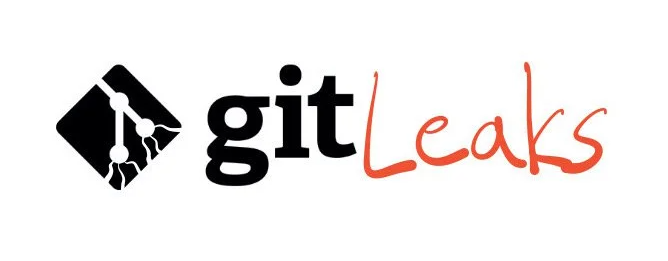In an age where data breaches and security vulnerabilities are rampant, it’s crucial for developers to safeguard sensitive information in their code repositories. One effective tool for achieving this is Gitleaks a powerful open-source tool designed to detect and prevent the exposure of secrets within Git repositories. In this tutorial, we’ll explore how to install, use, and configure Gitleaks to keep your code secure.
What is Gitleaks?
Gitleaks is a static analysis tool that scans Git repositories for sensitive data, such as API keys, passwords, and tokens. It helps developers catch leaks before they lead to catastrophic security issues. Imagine a situation where an exposed AWS key leads to unauthorized access to your cloud resources , Gitleaks provides a safeguard against such scenarios.
Why Is Gitleaks Important?
As more organizations move to cloud-based solutions and adopt DevOps practices, the risk of accidental exposure increases. A single leaked API key or password can lead to data breaches, financial loss, and damage to an organization’s reputation. Gitleaks helps mitigate this risk by:
- Proactively scanning for vulnerabilities: By identifying secrets in code, developers can take corrective actions before deployment.
- Integrating with CI/CD pipelines: Automating security checks ensures that no sensitive information makes it to production.
- Providing customizable detection: Users can tailor Gitleaks to their specific needs by defining custom rules.
Key Features of Gitleaks
Gitleaks comes packed with features designed to enhance security practices in software development. Here are some of its standout features:
1. Comprehensive Scanning Capabilities
Gitleaks scans the entire history of a Git repository, including all branches and commits. This thorough approach allows developers to identify secrets that may have been introduced at any point in the project’s lifecycle.
2. Customizable Rules and Regex Patterns
Out of the box, Gitleaks includes a set of predefined rules for common types of secrets, such as AWS keys, OAuth tokens, and database passwords. However, users can also create custom regex patterns to detect specific secrets tailored to their organization’s needs.
3. Integration with CI/CD Pipelines
Gitleaks can be easily integrated into Continuous Integration/Continuous Deployment (CI/CD) workflows. This integration allows for automatic scanning of code before merges or deployments, ensuring that no secrets slip past without detection.
4. Multi-Format Output
Gitleaks provides multiple output formats, including JSON, CSV, and plain text, making it easy to integrate with other tools or systems, share reports, or parse results programmatically.
5. Rich Documentation and Community Support
Gitleaks has robust documentation and a supportive community, making it easier for developers to get started and troubleshoot any issues they encounter.
How to Get Started with Gitleaks
Step 1: Installation
Installing Gitleaks is straightforward. Here are the methods for different environments:
- Using Homebrew (macOS):
brew install gitleaks - Using Docker:
docker pull zricethezav/gitleaks - From Binary Releases: Download the latest release from the Gitleaks GitHub repository and follow the installation instructions.
Step 2: Basic Command Usage
After installation, navigate to your Git project directory in the terminal and run:
gitleaks detectThis command initiates a scan of the repository, outputting any detected secrets to the terminal.
Step 3: Custom Configuration
For more tailored scanning, create a .gitleaks.toml file in the root of your repository. Here’s an example configuration file:
[[rules]]
description = "AWS Access Key"
regex = '''(A3T[A-Z0-9]{16}|AKIA[0-9A-Z]{16})'''This rule specifies a regex pattern for AWS Access Keys. You can customize rules for various types of sensitive information specific to your organization.
Integrating Gitleaks into CI/CD Pipelines
To ensure that secrets are detected before reaching production, integrating Gitleaks into your CI/CD pipeline is a best practice. Here’s how you can do it using a simple example with GitHub Actions:
name: Gitleaks
on: [push, pull_request]
jobs:
gitleaks:
runs-on: ubuntu-latest
steps:
- name: Checkout code
uses: actions/checkout@v2
- name: Run Gitleaks
uses: zricethezav/gitleaks-action@v1
with:
config: .gitleaks.toml
level: highThis configuration runs Gitleaks every time there’s a push or pull request, providing real-time feedback on potential secret leaks.
Real-World Use Cases
- Startup Security Audit: A tech startup integrated Gitleaks into their CI pipeline and discovered hardcoded API keys in a few legacy branches. By addressing these leaks before their upcoming launch, they avoided a potential security disaster.
- Enterprise Compliance: A large corporation adopted Gitleaks as part of their security compliance strategy, running daily scans on their repositories. This proactive approach helped them maintain compliance with industry regulations and protect sensitive customer data.
- Open Source Projects: An open-source project implemented Gitleaks in their contribution guidelines. Contributors were required to run Gitleaks on their branches before submitting pull requests, significantly reducing the risk of accidental secret exposure.
Challenges and Considerations
While Gitleaks is a powerful tool, some challenges need to be considered:
- False Positives: Depending on the regex patterns used, Gitleaks might return false positives. Regularly refining the rules can help minimize this issue.
- Team Education: Developers need training to understand the importance of secret scanning and how to configure Gitleaks effectively.
- Performance on Large Repositories: In very large repositories, scanning can take longer. Running scans on specific branches or commits can help manage this.
Conclusion
In an age where data breaches can have devastating consequences, tools like Gitleaks are essential for maintaining the security of software projects. By providing comprehensive scanning capabilities, customizable rules, and easy integration into CI/CD pipelines, Gitleaks empowers developers to take control of their code security. Whether you’re a solo developer or part of a large team, implementing Gitleaks can form a crucial part of your security strategy, ensuring that sensitive information remains safe and sound.
Start using Gitleaks today and take the first step towards securing your codebase against accidental leaks. With a proactive approach to security, you can focus on what you do best—building great software!

